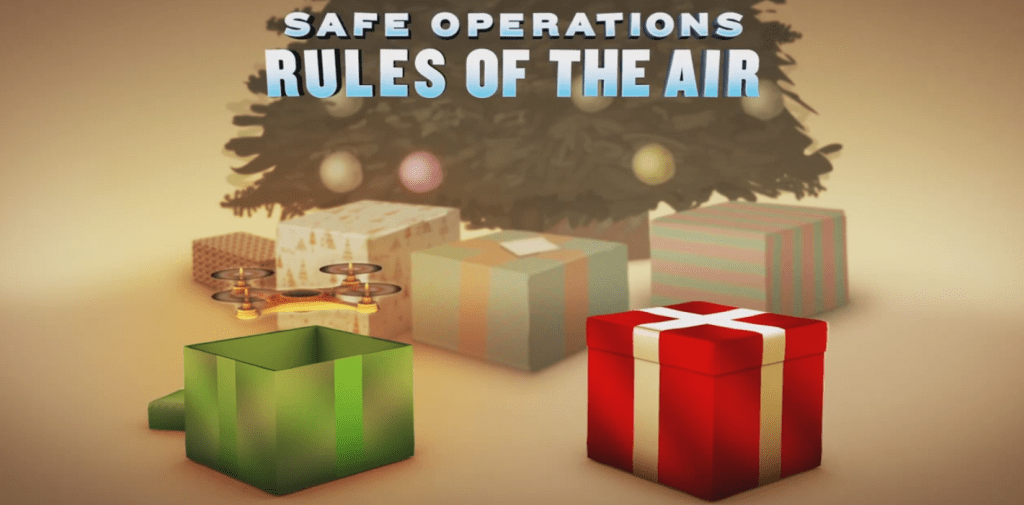
I’m pretty sure there will be more drones sold this Christmas season than ever before. Having more drones in the air, though, also means there is a higher chance for things to go wrong.
The Federal Aviation Administration (FAA), in partnership with the Association for Unmanned Vehicle Systems International, Academy of Model Aeronautics and the Small UAV Coalition, launched a new website today that aims to educate the public about how to safely fly drones remote controlled quadcopters UAVs unmanned aircraft systems (UAS).
With this launch, the FAA also published a new educational video that teaches you the basic rules, but sadly it’s the least interesting drone video you’ll ever see. I’m sorry if you already watched it.
“It’s that time of year when kids of all ages will receive presents for the holidays. Many will be excited when they unwrap the box and find an unmanned aircraft. How do you make sure you stay off the naughty list? We want you to know before you fly.”
Overall, there is not much new here, but while we can criticize the FAA for holding back commercial drone development — and the FAA also once again reiterates its current ban against any form of unlicensed commercial usage, including wedding and real estate photography — the rules for recreational use are mostly common sense and worth internalizing before you take out your drone for the first time.
Only a minority of new drone operators are likely to join a local model aircraft club or take a lesson as the FAA would like them to do, but in my experience, you should at least watch all the manufacturer’s instructional videos before you head out for the first time. Drones may look like toys (and they sure are fun to fly), but they can also be dangerous — or simply fly away from you uncontrollably if you don’t know what you’re doing.
So if you you expect to find a drone under your Christmas tree in the next few days, here are the rules the FAA wants you to know about:
- Follow community-based safety guidelines, as developed by organizations such as the Academy of Model Aeronautics (AMA).
- Fly no higher than 400 feet and remain below any surrounding obstacles when possible.
- Keep your sUAS in eyesight at all times, and use an observer to assist if needed.
- Remain well clear of and do not interfere with manned aircraft operations, and you must see and avoid other aircraft and obstacles at all times.
- Do not intentionally fly over unprotected persons or moving vehicles, and remain at least 25 feet away from individuals and vulnerable property.
- Contact the airport or control tower before flying within five miles of an airport.
- Do not fly in adverse weather conditions such as in high winds or reduced visibility.
- Do not fly under the influence of alcohol or drugs.
- Ensure the operating environment is safe and that the operator is competent and proficient in the operation of the sUAS.
- Do not fly near or over sensitive infrastructure or property such as power stations, water treatment facilities, correctional facilities, heavily traveled roadways, government facilities, etc.
- Do not conduct surveillance or photograph persons in areas where there is an expectation of privacy without the individual’s permission (see AMA’s privacy policy).
To this I would add: start small and learn the basic controls (takeoff, landing, emergency return-to-home) before you try anything more complicated.
No comments:
Post a Comment